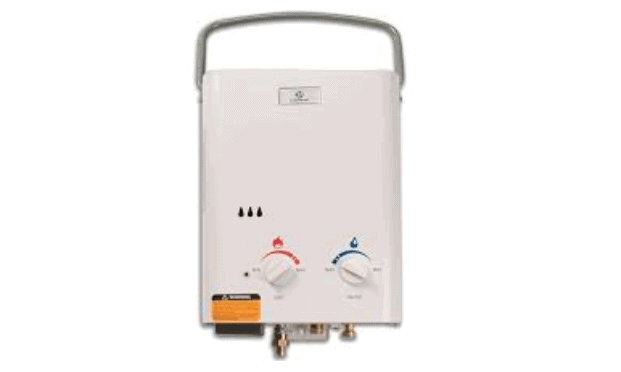Listen, you’ve spent a few hundred dollars for your tankless water heater. Heck, if you chose a high-end model such as the Rinnai RUC98iN Ultra Series Natural Gas Tankless Water Heater, there’s every chance that you paid more than a thousand dollars for it. No matter the cost of your unit, you want to make the most of what it can do, right?

See, the primary reason you invested in a tankless water heater is to ensure that your household never runs out of hot water. More to the point, you want to get hot water whenever you need it – at the press of a button. Even then, you have to know how to maximize your unit’s potential. We tell how.
Contents
First, Understand the Limits of Your Heater
This is where it all starts. Even before you start thinking how you can use your heater to the maximum, you should start by knowing its exact capabilities. The point we are trying to make here is that you should set realistic expectations with your model. Get familiar with its water flow, temperature rise, heat settings and so on.
The last thing you want is to overstretch the limits of your tankless water heater. Not only will you deal with constant breakdowns, but you may end up paying more for water and electricity. Once you know what to expect (and what not to) with your heater, then you can start to use it efficiently. And it is for this reason that we insist you read our buyer’s guide to get well acquainted with the basics of purchasing a tankless water heater. That way, you will be in a position to determine if a particular model is fit for your needs before you spend your money on it.
…that said, here’s how to make sure that your tankless water heater gives you the best value.
Keep an Eye on the Thermostat
The default thermostat setting of almost every other tankless heater of the market is at 140 degrees Fahrenheit. Nonetheless, there’s every chance that your home doesn’t need such a high-temperature setting. So, what can you do? Of course, you will turn it down to a reasonable level. In fact, we recommend that you set it to anywhere between 123 to 140 degrees Fahrenheit. That way, you will still get hot water without noticing much of a difference. And why is this important you ask?
Well, turning down your heater’s thermostat is helpful in a couple of ways. First, it is healthy for your wallet. In other words, you will save money on your utility bills. You can cut down your energy cost by up to 5% for every 10 degrees that you lower your thermostat. Besides, it will help keep your family safe. In essence, you won’t have to worry that your little kids will get burns caused by hot water.
Second, turning down your heater’s thermostat reduces the rate at which minerals accumulate inside the system. It will also reduce corrosion of internal components. By extension, this translates to extended use.
Reduce Your Water Consumption
Your tankless water heater may have its flow rate (measured in gallons per minute GPM), but if you want to make the most out of it, you should consider keeping your water consumption as low as possible. You see, when the heater is operating at a lower GPM, it will heat the water more quickly, which ensures that you have enough hot water for your needs.
One of the simplest ways to reduce your water consumption is to install a low-flow showerhead. State of the art models require a flow rate of about 1.5 gallons per minute and can provide a long, hot shower without spending too much water. In fact, if you have more than one bathroom, we suggest that you mount low-flower shower heads in each one of them.
Another way of cutting down the amount of water that you use in your household is to turn off the faucet while you brush your teeth or cleaning your dishes. Never leave your taps running. Be sure to install an aerator in your faucet to reduce the flow. In fact, this is the same mechanism used by low flow shower heads.
Other than that, wait until your dishwasher is full of utensils before turning it on. Whenever possible, avoid cleaning your dishes by hand or using the pre-wash setting with your dishwasher. If you are all about saving water, the economy setting will get the job done.
Additionally, you don’t have to clean all your clothes with hot water. Unless you live in areas with hard water, you can choose to use your water heater only when you are washing white garments.
Be Mindful of the Size of Your Tankless Water Heater
One of the most important considerations to make when choosing a tankless water heater is its size. Why? Well, because it allows you to get a suitable temperature rise, typically around 70 degrees Fahrenheit. As we stated from the kick go, tankless water heaters are somewhat expensive, and you don’t want to end up with a unit that is not powerful enough to meet your hot water requirements.
Even though your hot water needs may fluctuate from time to time, we suggest that choose a model that can heat 50% more water than you require. You may, for instance, figure out how much hot water you need at a particular time and use 4 GPM as you minimal threshold. You can then purchase a water heater with a flow rate of 6 gallons per minute.
One of the benefits of using a slightly powerful unit is that you can rest assured of a reliable performance even when the temperature of your underground water drops such as during winter. In fact, if you reside in colder areas, you should have a relatively more powerful water heater to counter the irregular temperature rise.
Hire a Professional to Install Your Water Heater
Unless you have an installation background, it is always good to seek the services of a professional plumber to mount your water heater. As strange as it may sound, one of the reasons your tankless water heater is likely to fail is improper installation. With a professional plumber, however, you will never have to second-guess about the cable connections. You don’t have to worry about things such as short-circuiting. Most importantly, you can always get professional advice on how to use the heater efficiently.
Note – a manufacturer may refuse to honor the stipulations of a warranty if you don’t use a professional to install your tankless water heater.
Insulate Your Piping
While this doesn’t sound like an obvious tip, it is a brilliant idea to help optimize your water heater’s full potential. You see, water inside an insulated pipe is two or three degrees warmer before it gets to your faucet. Theoretically, this means that you don’t have to run the water for long to warm it up.
The result is that you will not only save water but also reduce your energy bills. And the beauty of it is that you don’t have to spend a lot of money to insulate your water pipes. In fact, if you are a DIY enthusiast, you can do it all by yourself. The only thing you need to remember here is to start from the basement upwards.
In Conclusion
These are practical ways to help you optimize your tankless water heater’s ability. Implement each of them and you will be well on your way to saving money – which is the very reason you invested (or are about to) spend on a tankless water heater. Speaking of which, we welcome you to read our best tankless water heater reviews to discover the most-sought-after models on the market and what they have to offer.
